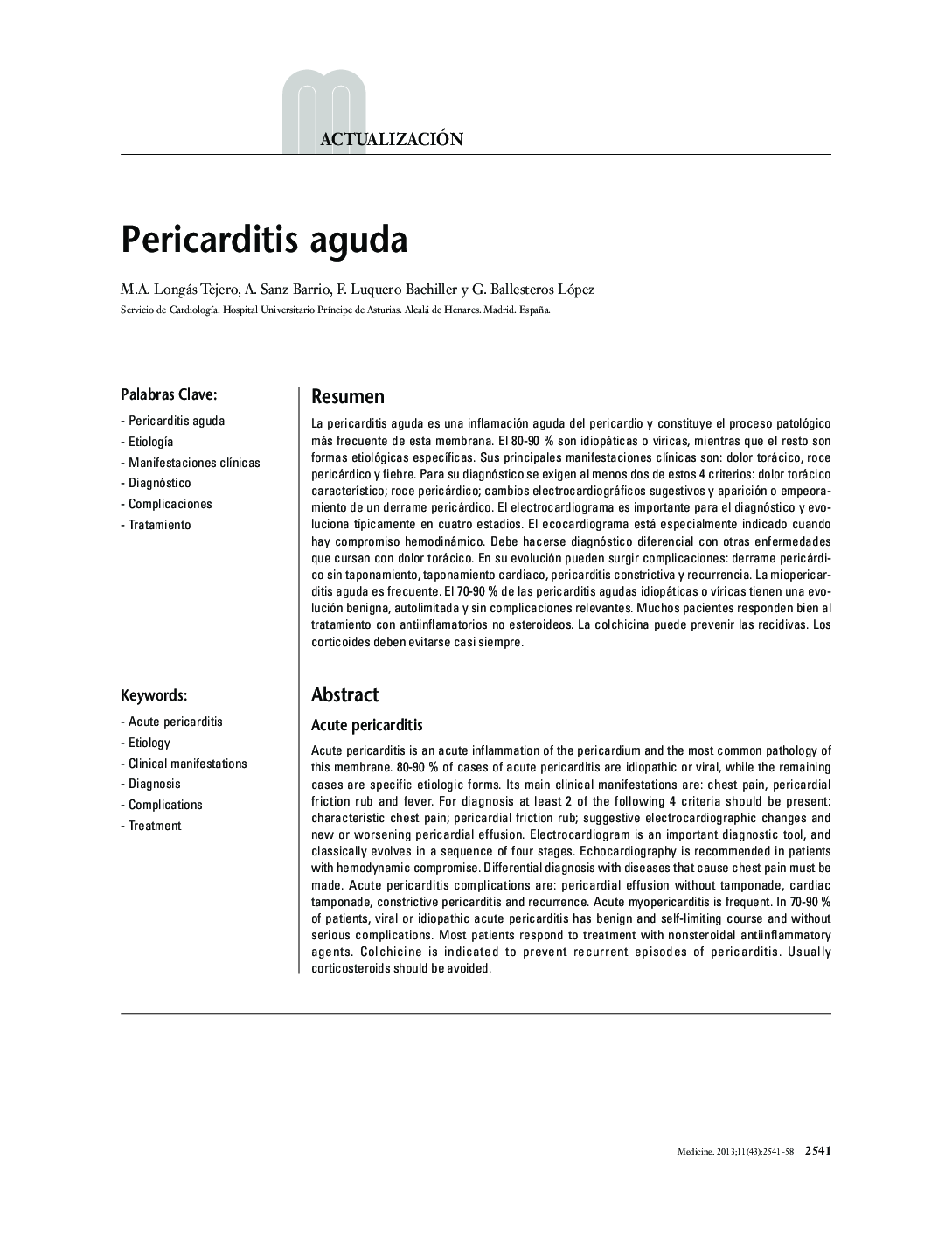| Article ID | Journal | Published Year | Pages | File Type |
|---|---|---|---|---|
| 3805911 | Medicine - Programa de Formación Médica Continuada Acreditado | 2013 | 18 Pages |
Abstract
Acute pericarditis is an acute inflammation of the pericardium and the most common pathology of this membrane. 80-90 % of cases of acute pericarditis are idiopathic or viral, while the remaining cases are specific etiologic forms. Its main clinical manifestations are: chest pain, pericardial friction rub and fever. For diagnosis at least 2 of the following 4 criteria should be present: characteristic chest pain; pericardial friction rub; suggestive electrocardiographic changes and new or worsening pericardial effusion. Electrocardiogram is an important diagnostic tool, and classically evolves in a sequence of four stages. Echocardiography is recommended in patients with hemodynamic compromise. Differential diagnosis with diseases that cause chest pain must be made. Acute pericarditis complications are: pericardial effusion without tamponade, cardiac tamponade, constrictive pericarditis and recurrence. Acute myopericarditis is frequent. In 70-90 % of patients, viral or idiopathic acute pericarditis has benign and self-limiting course and without serious complications. Most patients respond to treatment with nonsteroidal antiinflammatory agents. Colchicine is indicated to prevent recurrent episodes of pericarditis. Usually corticosteroids should be avoided.
Keywords
Related Topics
Health Sciences
Medicine and Dentistry
Medicine and Dentistry (General)
Authors
M.A. Longás Tejero, A. Sanz Barrio, F. Luquero Bachiller, G. Ballesteros López,
